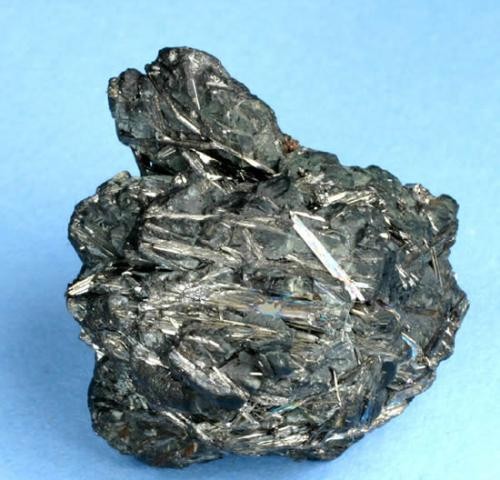In a certain copper-lead-zinc mine, copper mainly exists in the form of chalcopyrite, with the content of pyrite in the ore reaching over 50%. The symbiotic relationship between metal sulfides is complex, and some target minerals have fine particle size distribution. These characteristics of the ore lead to a low grade of copper-lead concentrate and an excessive content of arsenic and antimony in lead concentrate. Due to the existing process in the plant having issues such as substandard beneficiation indicators and low recovery rates, a process reconstruction has been carried out.

Currently, the plant adopts a preferential flotation process, with the original ore ground to a fineness of -0.074 mm, accounting for 85%. A flotation process of one rough, two concentrates, and two scavenges is used to obtain copper concentrate, while a flotation process of one rough, three concentrates, and two scavenges is used to obtain lead concentrate from copper flotation tailings. Zinc flotation tailings are treated with a flotation process of one rough, two concentrates, and two scavenges to obtain zinc concentrate, and zinc tailings undergo flotation with one rough, one scavenger, and one concentrate to obtain sulfur concentrate. However, the existing production indicators of the plant have disadvantages such as low copper-lead recovery rates and severe mutual inclusion of copper-lead concentrates, with copper recovery rate only at 62%, lead recovery rate at 75%, and zinc recovery rate at 90%.
Copper-lead-zinc polymetallic ores are often subjected to flotation processes such as preferential flotation, mixed flotation, partial mixed flotation, etc. Based on the characteristics of the ore, the recovery of lead, zinc, and sulfur using processes such as preferential flotation, copper-lead mixed flotation, copper-lead flotation-tailing zinc flotation, and copper-lead-zinc mixed flotation were investigated. Finally, a process of copper-lead mixed flotation, mixed flotation concentrate regrinding, copper-lead separation, flotation of lead from mixed flotation tailings, and flotation of sulfur from zinc tailings was chosen to recover copper, lead, zinc, and sulfur from this ore.
The main chemical composition analysis results of the original ore are shown in the figure below. The valuable components available for recovery in the ore are copper, lead, zinc, and sulfur. The main metal minerals in the ore are pyrite, galena, sphalerite, followed by arsenopyrite, chalcopyrite, and marmatite, with minor occurrences of cerussite and smithsonite; gangue minerals mainly include calcite, dolomite, quartz, followed by mica, kaolinite.
(1) Copper-Lead Mixed Flotation
In the copper-lead mixed flotation stage, the original ore is ground to a fineness of -0.074 mm, accounting for 65%. The depressant used is a combination of sodium hexametaphosphate, lime, and zinc sulfate, aiming to depress pyrite and gangue in the original ore. The dosages of depressants are 800g/t for lime and 150g/t for sodium hexametaphosphate. The collector used is a combination of ethyl xanthate and No. 25 black medicine, in a ratio of 1:1, with a dosage of 50g/t.
After copper-lead mixed flotation, it is necessary to regrind the mixed flotation concentrate. Studies have shown that as the regrinding fineness increases, the copper-lead concentrate grade and recovery rate increase. When the regrinding fineness reaches -0.037mm, accounting for 80%, the increase in copper-lead flotation recovery rate is not significant. Therefore, a regrinding fineness of -0.037mm, accounting for 80%, is chosen.
(2) Copper-Lead Separation
Since chalcopyrite and galena have similar floatability, separating chalcopyrite from galena is much more difficult than separating chalcopyrite from sphalerite. To achieve the separation of chalcopyrite and galena, it is necessary to strengthen the depression of galena.
After comparing various schemes, activated carbon is used for pre-depressing agents in the copper-lead separation process. Then, Z-200 is used as the collector, and sodium silicate + CMC + YZ (YZ is an inorganic compound, rarely used in copper-lead separation operations) are used as combined depressants to enhance the depression of galena, with YZ showing a significant selective depression effect on galena.
(3) Zinc Flotation
Next, it is necessary to recover zinc from the closed-circuit flotation tailings of copper-lead mixed flotation. The dosage of copper sulfate is 700g/t.
The principle of industrial reconstruction is to utilize existing equipment as much as possible. Based on the process flow and reagent system determined by experiments, the process on-site has been reconstructed. The specific reconstruction plan includes:
(1) Grinding System
Reducing the grinding fineness, changing the original two-stage grinding to one-stage grinding, and changing the original two-stage grinding to regrinding of copper-lead rough concentrates.
(2) Main Flotation System
The original copper flotation system is idle, and the original lead flotation system is changed to a copper-lead mixed flotation system. After grinding, the slurry is directly introduced from the mixing bucket into the original lead roughing flotation cell for copper-lead mixed flotation. The mixed flotation tailings enter the original zinc flotation system for zinc flotation as usual, and the zinc flotation tailings enter the sulfur flotation system for sulfur flotation.
(3) Newly Built Copper-Lead Separation System
The copper-lead mixed concentrate is concentrated and de-foamed by a newly installed thickener and then regrinded. The slurry after regrinding is subjected to copper-lead separation flotation in a mixing tank. The copper-lead separation system uses a newly installed flotation machine.
After the reconstruction, the copper concentrate grade increased by 6.51 percentage points, the copper recovery rate increased by 8.68 percentage points, and the lead and zinc recovery rates increased by 6.59 and 2.36 percentage points, respectively, resulting in significant economic benefits brought by the technical transformation.